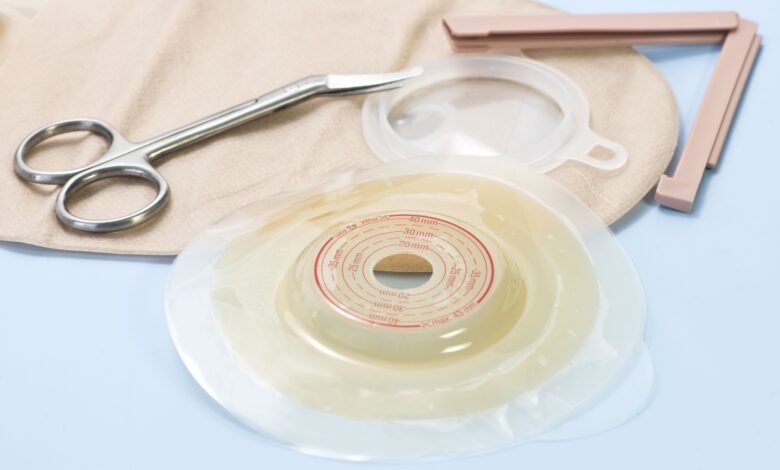Caring for an Ostomy

Will it smell? Is the ocean or a hot tub off limits? What about cleaning the pouch?
These are just some of the questions that Stephanie S. Yates, a nurse practitioner who specializes in wound care at Duke Cancer Center Wound Ostomy Clinic in Durham, North Carolina, said she has heard over the past 40 years.
CURE® spoke with Yates to learn more about ostomies and educate patients with cancer on how to best care for themselves after receiving one.
Location, Location, Location
An ostomy is a surgical procedure that creates a new way for waste — mostly feces and sometimes urine — to leave a person’s body. Not to be confused with an ostomy, the stoma refers to the opening created during the ostomy procedure.
As Yates noted, the type of stoma a patient with cancer receives depends on the location of their tumor. For instance, most patients with tumors near the anus need a permanent colostomy. In this instance, an opening is made into the colon through the abdomen to allow fecal waste to bypass the part of the colon that was removed.
But, as Yates explained, fewer and fewer colostomies are being performed across the U.S. In fact, she said about 70% of the patients she sees have a temporary ileostomy, in which an opening is created in the small intestine through the abdomen. Surgery for these patients involves removing
a section of the colon with the intent of being able to reconnect it.
“They have to divert the stool with an ileostomy in the small intestine for a short amount of time to allow it to heal before the stool has to go that way and pass through the anus,” she said in an interview. “And that makes a big difference.”
On average, patients who receive a temporary stoma have it in place for three to six months and are then able to return to using the toilet in a normal way, according to Yates.
Ask Questions
Yates encourages patients to ask their care team questions about their stoma, especially whether it will be temporary or permanent.
“It makes a difference mentally in how you accept things (as well as) adjusting to what this new lifestyle is going to be about,” she said.
But unfortunately, there are cases in which a concrete answer may not be available. Yates said this is because the tumor may be more aggressive than first believed, or certain types of treatment may prevent patients from undergoing additional surgery. Moreover, a patient may have hoped for reconnection in the future, but disease progression may take that option off the table.
Navigating Life With an Ostomy
One of the main concerns most patients have is whether they will smell, according to Yates.
“I’m usually able to easily inform them that they should not have smell because the pouches are made out of odor-proof material,” she said. “The only time you have smell (is when) you’re usually in your bathroom (caring for the pouch), but everybody else has smell (when in the bathroom).”
Additionally, she explained, people assume that they need to overhaul their diet.
“A lot of people think, oh, there’s a colostomy diet,” she said. “But there really is not.”
If certain foods caused someone to experience stomach upset or have gas, that will likely continue after an ostomy. Yates suggested that patients pay more attention to items that cause gas — such as beer or beans — and choose how much and when they consume those particular foods.
“Otherwise, there’s no absolute must eat or can’t eat,” she said. “We would encourage you to drink plenty of fluids and eat a variety of foods.”
But that advice changes slightly for patients who have received an ileostomy, according to Yates. She recommends that these patients maintain a low-fiber
diet as too much fiber may upset their system and make it so they’re unable to pass their stool as easily. In this case, patients are advised to eat cooked vegetables, meats, breads and pastas.
Basic Ostomy Care
Washing with soap and water is one of the best ways to care for the area after an ostomy, according to Yates.
“If you think about it, (it’s) like (how) you take care of your bottom — clean and neat,” she said. “It doesn’t have to be sterile (and) it doesn’t have (to include) any particular harsh cleaners.”
Depending on a patient’s preference, they may remove the pouch around the stoma in the shower, dispose of it and then place a new adhesive and pouch over the stoma. Or they may feel more comfortable changing their pouch and cleaning the stoma area at the sink.
As for infections following a stoma, Yates noted that the risk drops significantly within a month of the procedure. The worst a person might experience is skin irritation around the stoma.
“That’s where the stool just sits against the skin typically and causes skin irritation,” she explained. “I think of that more like diaper rash. It’s a matter of using some products to just protect the skin better. Maybe adjusting the fit of the ostomy pouch system. And then that way, usually that skin irritation takes care of itself.”
And if people were worried about having to consistently clean the pouch that holds their feces, that’s not much of a thing anymore. Most pouches are disposable and insurance covers them, according to Yates.
Also, she added, the pouches and adhesive are designed so as to hold up well in water.
“You can go into the swimming pool, the hot tub, the lake, the creek, the ocean — whatever kind of water you want to be in,” she said.
For more news on cancer updates, research and education, don’t forget to subscribe to CURE®’s newsletters here.
Source link
#Caring #Ostomy



